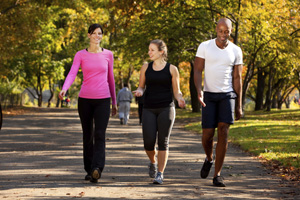Problems
GOOD MORNING?
We get up in the morning, go for a walk, have a cup of tea, take the morning news paper in the hand, try to relax. But some thing is missing…
We have to go to the toilet, which is not so relaxing for quite a few.
 For some of us it is a very painful experience. We think about the pain, the bleeding, the embarrassment of discussing the problem, the agony of some dreaded disease. Yes, we are talking about piles, fissures, sinuses and fistulae.
For some of us it is a very painful experience. We think about the pain, the bleeding, the embarrassment of discussing the problem, the agony of some dreaded disease. Yes, we are talking about piles, fissures, sinuses and fistulae.
Piles is the feeling of some small masses coming out of the anal canal when we are trying to defecate. It can again go back after we relax the pressure. Some drops of blood can drop in the stool while we are straining. The mass can be painful and hard if it is infected. It is called thrombosed piles. It is of three degrees of severity. If it is not popping out it is first degree, if it pops out and again goes back it is second degree, and if it is not going back it is third degree.
Fissures are linear cuts at the edge of the anal canal. It usually occurs after passage of very hard stools. It can also occur in a postpartum lady after a prolonged labor. There is usually a line of blood on the side of the stool. It is usually a very painful condition.
Sinuses and fistulae usually occur when a perianal boil or an abscess thereby has burst on its’ own. It comes with pain and swelling, and then subsides with the passage of pus.
Now, let us look at our problem in a rational way. If we see the anal opening in the form of a clock with the anterior part as 12’0 clock, the posterior part towards the back as 6’0 clock and the sides towards the thighs as 3’ and 9’0 clock, then we can very well describe our disease.
Piles do appear at 3’, 7’ and 11’0 clock, they are the primary piles. Any other piles would be secondary or tertiary piles. The masses that we feel as piles are actually swelled up mucosa with underlying small vessels also called haemorrhoidal tissue, hence piles are known as hemorrhoids.
Fissures do appear at 6’ and 12’0 clock, and sometimes have a hanging edge of skin at the end called the sentinel piles, which actually is not a piles but a piled up skin at the end of the linear ulcer or fissure.
Fistulae can occur anywhere but those in front or anterior to 3’ and 9’0 clock do have a radial tract, while those behind have a curved tract with the opening in the anal canal at 6’0 clock.
We are not born with these problems but develop them due to our wrong diet habits. We can avoid them and /or get some relief if we follow some simple principles.
 Drink plenty of fluids. It helps in softening the fecal matter. The colon usually reabsorbs 90% of the water, so only 10% is left in the fecal matter.
Drink plenty of fluids. It helps in softening the fecal matter. The colon usually reabsorbs 90% of the water, so only 10% is left in the fecal matter.- Take high roughage diet. The cellulose is not absorbed and helps in formation of the fecal matter. Wash vegetables thoroughly before cooking, but try to avoid peeling of vegetables. Avoid highly refined diet like maida (flour), instead take mixed grain atta, or flour with the husk not removed. Roughage makes the excreta bulky.
- Eat salads or green leafy vegetables. It fills up the stomach, but keeps your weight in control.
- Have full diet. You do not have to strain in the morning to defecate.
- Take one citrus fruit daily. It helps in lubricating.
- Please give defecation the first priority, everything else can wait.
- Walking, jogging or stretching helps in evacuating the gases and straining is avoided.
When the problems have started to develop, we can follow some simple principles to get some relief.
- If there is bleeding, do not panic. This is venous bleeding and will stop by a simple procedure. Just elevate the lower limbs, by elevating the foot end of the bed.
- If there is pain use some locally acting anesthetic ointment both before and after defecation.
- Sit in lukewarm water for a while. It helps in proper toileting of the area.
- If we have constipation, we can take some laxative to get relief.
- If the piles have popped out, first elevate the limbs, it reduces the swelling, then use the local anesthetic and then sit in the lukewarm water to soften it. Now the piles can be slowly pushed back into the anal canal.
- If we have a throbbing pain near the anal canal, it usually is a perianal abscess. Consult your surgeon immediately. It needs to be drained or a fistula will develop in the future.
Now a few suggestions for my colleagues.
- Always examine your patient of pain in perineum in the knee-elbow position. You can not miss the disease.
- Always give first priority in draining a perianal abscess or a fistula will develop in near future.
- Do not avoid per rectal examination in patients with problems near anal canal. It changes the future for the patient.
To conclude the aboral route might not be a very bright topic to discuss about, but for a beautiful and healthy living it should be given its’ due importance.
Dr. Arindam Mandal
M.S. Surgeon PGI MER
GMC Hospital Fujairah

